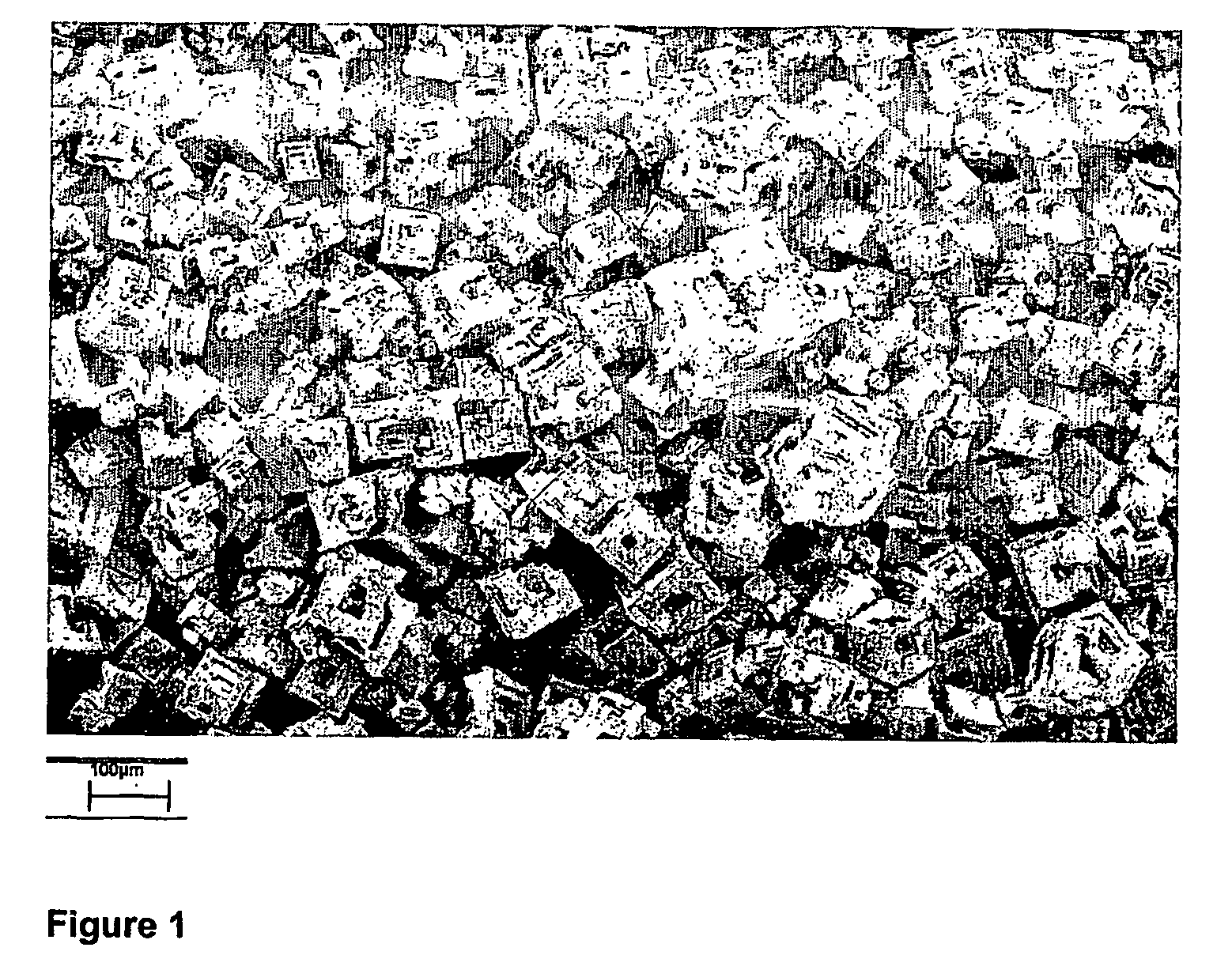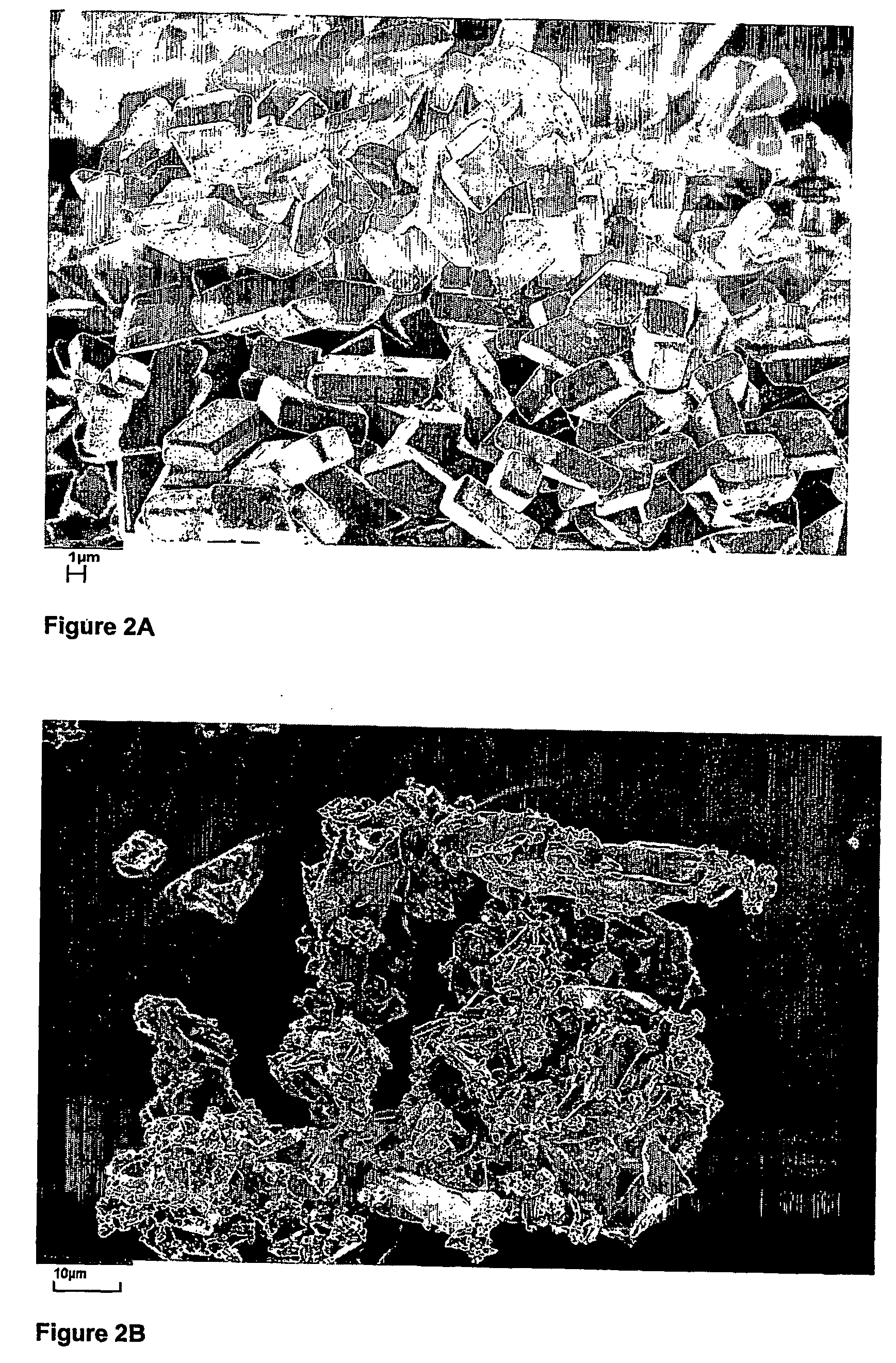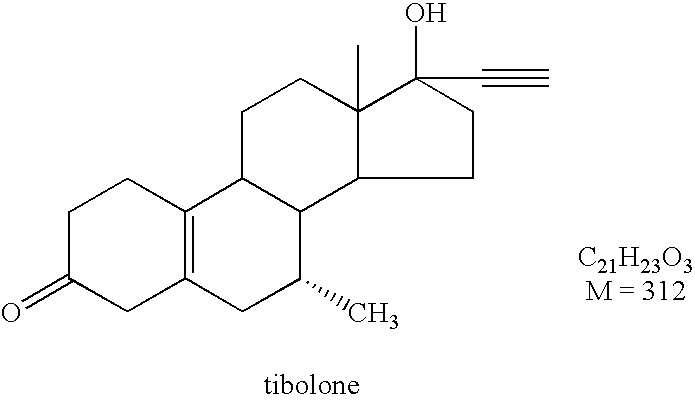Antisolvent solidification process
a solidification process and solvent technology, applied in the direction of separation process, crystallization auxiliary selection, drug compositions, etc., can solve the problems of agglomeration or morphological instabilities, and high energy consumption of evaporation process
- Summary
- Abstract
- Description
- Claims
- Application Information
AI Technical Summary
Benefits of technology
Problems solved by technology
Method used
Image
Examples
example 1
Production of a Crystalline NaCl Composition
[0079] The following procedure was applied for the production of sodium chloride crystals using the antisolvent crystallisation process according to the present invention. All experiments were performed at ambient conditions. The resulting crystals were analysed by SEM (Scanning Electron Microscopy) and CSD (Crystal Size Distribution) measurements by means of laser diffraction using a Mastersizer 2000 apparatus of Malvern Instruments with a Fraunhofer model for data analysis.
[0080] A 25 wt % sodium chloride solution was prepared at room temperature. Pure ethanol was used as an antisolvent. Said salt solution was dosed from the outside of a tubular membrane into the antisolvent (ethanol) on the inside of this membrane. Said membrane was a hydrophobic tubular SPG®-membrane, type UP11023, with a pore-size of 1.1 μm and with a 10 mm inner diameter. A gear pump was used to control the velocities. The speed of the antisolvent was set to 50 l / h...
example 2
Production of a Crystalline 3-Ketodesogestrel Composition
[0083] The following procedure was applied for the production of 3-ketodesogestrel using the antisolvent crystallisation of the present invention. All experiments were performed at ambient conditions. The resulting crystals were analysed using CSD measurements that were measured via conventional laser diffraction technique.
[0084] A 3-ketodesogestrel solution was prepared of 97 g 3-ketodesogestrel in 5 l of ethanol. Water was used as antisolvent. For dosing, a Microdyn® type SE020TP1N membrane with an average pore size of 1 μm was used. The 3-ketodesogestrel solution was dosed from the outside of the membrane to the antisolvent on the inside of the membrane. The speed of the antisolvent was set to 45 l / hr. The speed of the 3-ketodesogestrel flow was set to 0.41 l / hr. Again, a gear pump was used to control the velocities. The crystals thus obtained were collected using filtration, washed with 100% ethanol, and subsequently dri...
example 4
Production of a Crystalline Progesteron Composition
[0090] The following procedure was applied for the production of progesteron. All experiments were performed at ambient conditions. The resulting crystals were analysed by CSD measurements by means of laser diffraction using a Mastersizer 2000 apparatus of Malvern Instruments with a Fraunhofer model for data analysis.
[0091] A progesteron solution was prepared of 50 g of progesteron per litre of ethanol. Water / ethanol mixtures of different compositions (See Table 2) were used as antisolvent. For dosing, a Microdyn® type SE020TP1N membrane with an average pore size of 1 μm was used. The progesteron solution was dosed from the outside of the membrane to the antisolvent on the inside of the membrane. A gear pump was used to control the flow velocities. The speed of the antisolvent was set to 45 l / h and the speed of the progesteron solution was set to 12 l / h. The crystals thus obtained were collected using filtration, washed with 100% ...
PUM
| Property | Measurement | Unit |
|---|---|---|
| Particle size distribution | aaaaa | aaaaa |
Abstract
Description
Claims
Application Information
 Login to View More
Login to View More - R&D
- Intellectual Property
- Life Sciences
- Materials
- Tech Scout
- Unparalleled Data Quality
- Higher Quality Content
- 60% Fewer Hallucinations
Browse by: Latest US Patents, China's latest patents, Technical Efficacy Thesaurus, Application Domain, Technology Topic, Popular Technical Reports.
© 2025 PatSnap. All rights reserved.Legal|Privacy policy|Modern Slavery Act Transparency Statement|Sitemap|About US| Contact US: help@patsnap.com



